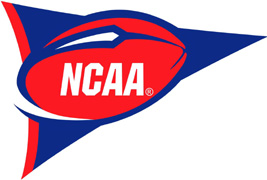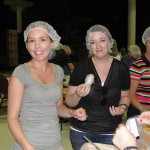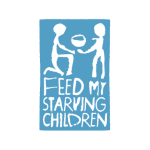Everything I Need to Know About Branding I Learned from College Football

Remember the adage everything I need to know I learned in kindergarten? Well let's think about this in terms of branding; that sentence could easily translate to everything I need to know about branding I learned from college football.
As I've written about in a number of past posts creating a memorable brand experience and creating a strong brand loyalty are the hallmarks of a successful brand, and nowhere will you find a company or product that creates the undying passion and loyalty the way college football teams do.
Point-in-case: When I originally started to write a post tying branding and college football together I was going to list the top ten college football brands (admittedly determined by my own biased ranking system) but quickly decided this was a bad idea based on a number of things.
- Problem #1: The thought of ranking my favorite team (Go Gators!) at anything other than #1 made my skin crawl.
Problem #2: SEC schools would undoubtedly take over the top five (heck the entire top ten would probably be SEC schools in my mind) because in addition to being a Florida fan I'm an SEC fan.
Problem #3: Last but certainly not least, I knew that if I started ranking college teams a debate so heated would break out in the office that I feared our walls would come crashing down like goal posts of yesteryear.
So how do college football teams garner such strong brand experiences and loyalty? It's because when it comes to branding, college football gets it. There is a painstaking attention to detail associated with a college football brand from making sure the correct Pantone color is used for every piece of equipment, apparel and brochure to guarantee consistency to nostalgic activities that create positive brand associations. These nostalgic activities can include a school's unique tailgating traditions and pre-game ceremonies. Every detail is considered, and everything is branded.
But why would a school spend so much time, energy, and money to create these branded experiences? It's simple. A school with a strong brand will continue to attract masses of new students each year (subsequently growing its brand's reach every year), students then graduate, become alumni and alumni become donors to the school. Finally there is the revenue and brand impressions generated from trademark licensing. Schools like the University of Texas, University of Florida, University of Michigan, University of North Carolina, etc. generate millions of dollars each year from licensing revenue alone. The number of impressions brands like these get each year from the sale of licensed apparel and equipment only furthers the awareness and loyalty for brands.
Having a strong brand in college football is more than winning games because even in recent slumps of some the greatest brands in college football their fans have remained true and passionate. It's all about the experience and the passion the fans feel for their brand…I mean team.
So repeat after me: everything I need to know about branding I learned from college football.
Addison Whitney Helping Hands Event: Million Meal Mission





Addison Whitney recently attended a mobile food packing event hosted by Harrison United Methodist Church in Ballantyne for starving children in Haiti, the Philippines and more than 60 countries around the world. In partnership with Samaritans International and the "Feed My Starving Children" organization, the "Million Meal Mission" food packing event supports children in impoverished living conditions through nutritional support. This was a community-wide event for local businesses, civic organizations and churches with a goal of having 1,700 volunteers pack 350,000 (of the 1 million) meals in 3 days.
FMSC has developed a food mixture that is easy and safe to transport. Preparation only requires boiling water and it is culturally acceptable all over the world. With the input of scientists from major food companies, FMSC developed MannaPack™, a formula consisting of rice, soy, vitamins, minerals, dehydrated vegetables and chicken flavoring.
In an assembly-line fashion, volunteers measure the ingredients and package the meals in small pouches. The formula was designed to save the lives of severely malnourished and starving children but the ingredients also improve the health, growth and physical well-being of children who are no longer in immediate danger of starvation. A single bag of food provides meals for six children.
Result:
5,000 plus volunteers and businesses around Charlotte and Union County packed 1,019,304 meals during the mobile packing events at Mineral Springs UMC, Harrison UMC and Oasis Shrine. These meals will provide enough food for 2,793 poverty stricken children for one full year!
Please visit the Feed My Starving Children website for information on how you can help!
Happy 50th Anniversary!!
The pill. No, not a pill, but THE pill. The pill that sexually revolutionized women and the control over their bodies. The pill that wrapped itself in religious dilemma and political controversy. The pill that to this day still raises concerns over morality and safety.
This year marks the 50th anniversary of this medicinal wonder. Often misunderstood, this hormonal remedy has walked a littered road of controversial backtalk and revolutionary movements. Therefore, like most things taboo, interesting, or just pretty, it has earned itself a Time magazine cover, adequately accessorized with a very detailed and fascinating article. I mean, I read the entire thing.
Whether you’re for it, against it, on it, or a boy, this article gives an intriguing outlook about the history of birth control as a concept, how it transformed into a drug, and ultimately how it became a way of life for many women...and, of course, the chaos that shadowed it.
Check out the Time article here, and leave your thoughts/feelings below.
FYI, today roughly 100 million women around the world use the pill.
Contributed by: Keri Lynch
A Branding Mission From Our Government
The branding mission, should you choose to accept, is to re-brand No Child Left Behind.
On February 4th, Arne Duncan, our new Secretary of Education, shared his vision with Michelle Block on All Things Considered. Mr. Duncan considers quality education to be “the civil rights issue of our generation.” With this rhetoric you can trust he is not kidding around when he challenged all of us in the branding industry to “repackage and rename” the education reform set to replace or improve upon “No Child Left Behind.” This is quite the linguistic challenge because not only does this name need to inspire the inclusion and betterment of all American children but it also needs to rebuild bipartisan consensus on education reform! Read more
